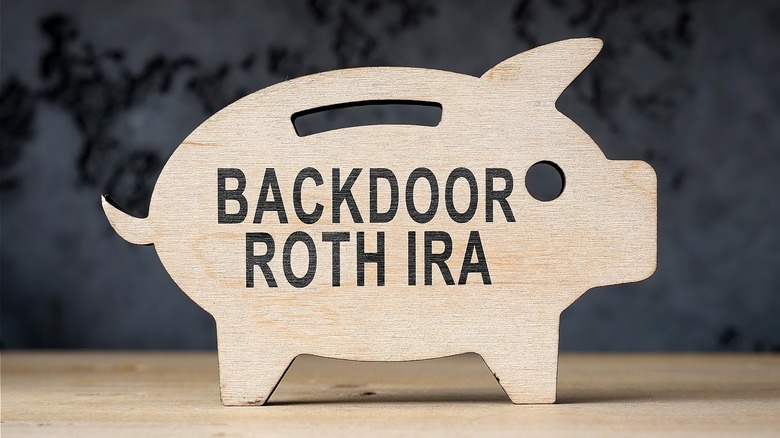How Does A Backdoor Roth IRA Work?
Saving for retirement can be a daunting prospect; there's a lot to learn along the way. For example, individual retirement accounts, or IRAs. To start, there are two different types: traditional and Roth. But what does that mean? Well, big differences include what sort of money you contribute — that is, after-tax dollars or pretax dollars — whether or not earnings can grow tax-free, and income limits. (On that note, here's how to open an IRA account.)
As far as the income limits, that's where backdoor Roth IRAs enter. A backdoor Roth IRA isn't another type of individual retirement account; rather, it's a strategy that allows high-income earners to get around the income cap placed on Roth IRAs. In order to contribute to a Roth IRA in 2024, your modified adjusted gross income (MAGI) couldn't exceed $161,000 for individual filers, or $240,000 for married couples filing jointly. A backdoor Roth IRA — which is a Roth conversion — allows those who earn more than these limits to still contribute to a Roth (in the future) and take advantage of the tax-free earnings growth of the account.
The key to a backdoor Roth IRA
As said, earnings in a Roth IRA grow tax-free, which also means future withdrawals aren't taxed. With a traditional IRA, which is funded with pretax dollars, it's the opposite: Earnings in the account don't grow tax-free and account holders will need to pay taxes on any money they withdraw. Further, with Roth IRAs, you can withdraw your contributions (not earnings) at any time and for any reason, and not face an early-withdrawal tax penalty. (Here's more on whether it's okay to withdraw money from your Roth IRA or not.)
For these reasons, many people choose to open a Roth IRA, which is funded with after-tax dollars. But as said, Roth IRAs are limited to people who earn less than the income caps for the year, and the IRS adjusts these limits annually to account for inflation. In 2024, for example, the limits increased by $8,000 for individual filers and by $12,000 for married couples filing jointly.
That all said, you may have already guessed, but there is no income limit for the pretax traditional IRA, which is the key to how high-income earners can get around the Roth income rule. It's called a backdoor Roth IRA because those who use the strategy are unable to open a Roth account in the usual way.
How a backdoor Roth IRA works
So, here's how a backdoor Roth IRA works. First, you'd fund a traditional IRA, with pretax dollars; then, at some point later on, you would convert that individual retirement account into a Roth. When you do, you will need to pay taxes on the funds withdrawn, but then, once converted, your Roth IRA earnings will grow tax-free. As you might have guessed as well, there are no income eligibility limits on conversions (this has been the case since 2010). What's more, there are no limits on how much you can roll over in a Roth conversion.
With this said, there are limits on what you can contribute to a traditional IRA each year. And this applies to everyone, even to high earners who can contribute much more. In 2024, this cap increased by $500 to $7,000 for anyone younger than 50, while those aged 50 and older could contribute an additional $1,000 in catch-up contributions. If you would like to open or contribute to a traditional IRA, note that the deadline for the current year is Tax Day of the following year. And speaking of which, here's what really happens when you don't file your taxes on time.


